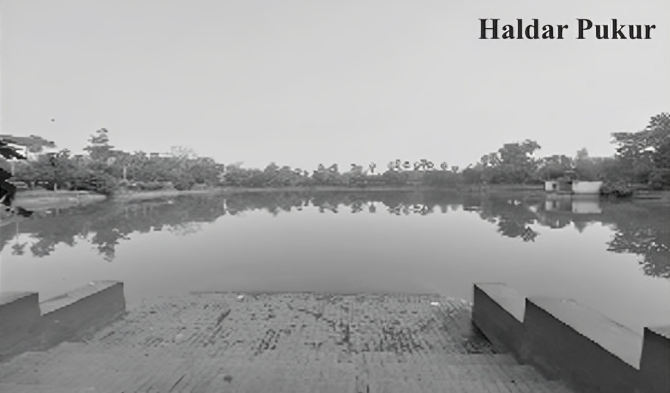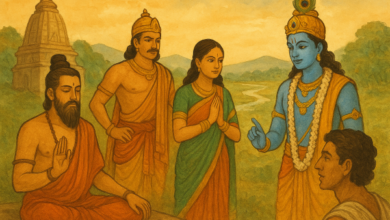Journey into the sacred roots of Ramakrishna & Sarada
TRAVELOGUE: This pilgrimage to Kamarpukur & Joyrambati offers not just a glimpse into the divine lives but also a profound inner experience

 The birth of Sri Ramakrishna and Holy Mother Sarada Devi was surrounded by divine signs and celestial gestures, as though nature itself prepared to welcome these spiritual giants.
The birth of Sri Ramakrishna and Holy Mother Sarada Devi was surrounded by divine signs and celestial gestures, as though nature itself prepared to welcome these spiritual giants.
Chandramani Devi, Ramakrishna’s mother, once witnessed a column of radiant light descending from the sky and entering her body near the Shiva temple at Kamarpukur. This profound vision filled her with an otherworldly joy and signalled the birth of a divine soul destined to awaken spiritual consciousness across the globe.
Similarly, in the quiet village of Joyrambati, Shyamasundari Devi, the mother of Sarada Devi, experienced a mystical vision while resting beneath a bel tree. She saw a celestial girl descending from the heavens, merging into her being, a heavenly sign of the compassionate and universal motherhood that Sarada Devi would later embody. These divine portents sanctified both Kamarpukur and Joyrambati, setting the stage for a spiritual renaissance that continues to inspire humanity.
I embarked on a spiritual journey with my family — my wife and daughter — to Kamarpukur, West Bengal, the ancestral village of Sri Ramakrishna Paramahamsa.
Nestled in rural Bengal, Kamarpukur exudes an old-world charm, with its narrow paths, sprawling fields and serene ponds. The nearest railway stop, Goghat Station, offers a brief yet picturesque ride via local autorickshaws (totos) to reach this sacred village.
Upon arrival, the rustic beauty of Kamarpukur stood in sharp contrast to the encroaching commercialism on the approach road to the Ramakrishna Math. While modern stalls and signboards obscure the simplicity of the place, the sanctity of Ramakrishna’s ancestral home has been preserved in its pristine form by the Ramakrishna Mission (RKM).
Birthplace of Sri Ramakrishna
The humble hut where Ramakrishna was born remains the most revered site in Kamarpukur. Visitors can pay homage at the adjacent Sri Raghuvira Temple, which houses sacred objects such as the Salagrama Sheela of Raghuvira (Rama), Sitala Devi’s earthen jar, Rameswara Sivalinga and an image of Gopala.
While the huts have undergone some renovation due to ageing, the divine vibrations remain intact, especially under the legendary mango tree planted by the saint himself.
Nearby, the Shiva Temple, where Sri Ramakrishna’s mother had a divine vision of celestial light entering her body—signifying his conception—remains a place of deep spiritual resonance.
A recently built temple, featuring a marble idol of Ramakrishna, now fronts a hall for devotees. Despite photography being prohibited, the tranquil aura tempts one to capture its timeless beauty. Evening prayers here, with resonant chants, deepen the sense of spiritual connection.
Sacred spots of Kamarpukur
Guided by a local devotee, Asima Chattopadhyay, we explored key landmarks linked to Sri Ramakrishna’s childhood. The Haldar Pukur, the pond after which the village is named, has a small Kali temple nearby. The Gopeswar Shiva Temple stands as a tribute to his mother’s fervent prayers for her son’s well-being.
Equally fascinating is the Laha Family Vishnu Temple, opposite the primary school where young Gadadhar (Sri Ramakrishna) studied. The courtyard here narrates episodes from his life. The house of Sitanath Pyne is another nostalgic landmark, recalling the famous event when Ramakrishna, playing Lord Shiva in a village drama, entered a divine trance.
Another must-visit is the Vishalakshi Temple in Anur village, just 2 km away, where Sri Ramakrishna frequently sang hymns and once experienced Samadhi. Walking through the mud houses and lush landscapes of Kamarpukur, one feels the saint’s joyful, childlike energy lingering in the air.
Journey to Joyrambati
A short ride through misty village roads brought us to Joyrambati, the birthplace of Sarada Devi. The tranquil setting of the Sri Sri Matri Mandir, with its pristine white idol of the Holy Mother and the adjacent Punya Pukur (Holy Tank), emanates maternal warmth.
Devotees gather here in deep reverence, as if embraced by the divine presence of Sarada Devi herself.
Witnessing my young daughter’s unwavering gaze at the Holy Mother’s idol reminded me of Swami Vivekananda’s profound words on the concept of “Mother” as the embodiment of divine energy and love. Her fascination echoed Sister Nivedita’s joy when Sarada Devi lovingly called her “Baby.”
Puratan bari and village simplicity
The puratan bari (old house) of the Holy Mother stands as a symbol of simplicity and spiritual strength. The modest huts, kitchen, and temple narrate the story of a life lived with grace and minimal needs. The village atmosphere, steeped in humility, connects visitors with the essence of Bengal’s spiritual heritage.
Just 7 km away lies Koalpara, another village intertwined with the Holy Mother’s life. Here, the monastery, established in 1909, preserves her memories, with daily worship of the portraits of Sri Ramakrishna and Sarada Devi.
Divine legends and sacred memories
The Sri Sarada Math and Ramakrishna Sarada Mission in Joyrambati are linked with a divine vision of Sarada Devi’s mother, Shyamasundari Devi. As legend narrates, under a bel tree (Bilva Patra or Aegle marmelos), she encountered a celestial girl who entered her womb, signifying Sarada Devi’s divine birth.
Other sacred sites include the Simavahini Temple, where Goddess Durga appeared before a fasting Sarada Devi, and the Amodar Ghat, which she revered as the Ganga. Here, Swami Saradananda and other disciples meditated, adding to the ghat’s spiritual magnetism.
Hridayram’s ancestral shrine
The ancestral property of Hridayram Mukhopadhyaya, Sri Ramakrishna’s maternal nephew, remains a solitary yet deeply spiritual site amidst expansive paddy fields. The Durga Temple here is said to be enlivened, with a mystical connection to Sri Ramakrishna’s subtle presence during Hridayram’s Durga Puja celebrations.
Reflections on the Journey
This spiritual pilgrimage to Kamarpukur and Joyrambati offered not just a glimpse into the lives of Sri Ramakrishna and Sarada Devi but also a profound inner experience.
Walking along the same village paths where these great souls once lived fills the heart with an indescribable peace. The aura of simplicity, devotion, and divine love here transcends material grandeur, reminding us of the eternal truth that spirituality thrives in humility and purity of heart.
As we bid farewell to these sacred villages, a deep sense of gratitude and serenity enveloped us. Kamarpukur and Joyrambati are not mere destinations; they are timeless journeys into the heart of divinity and the essence of spiritual India.





